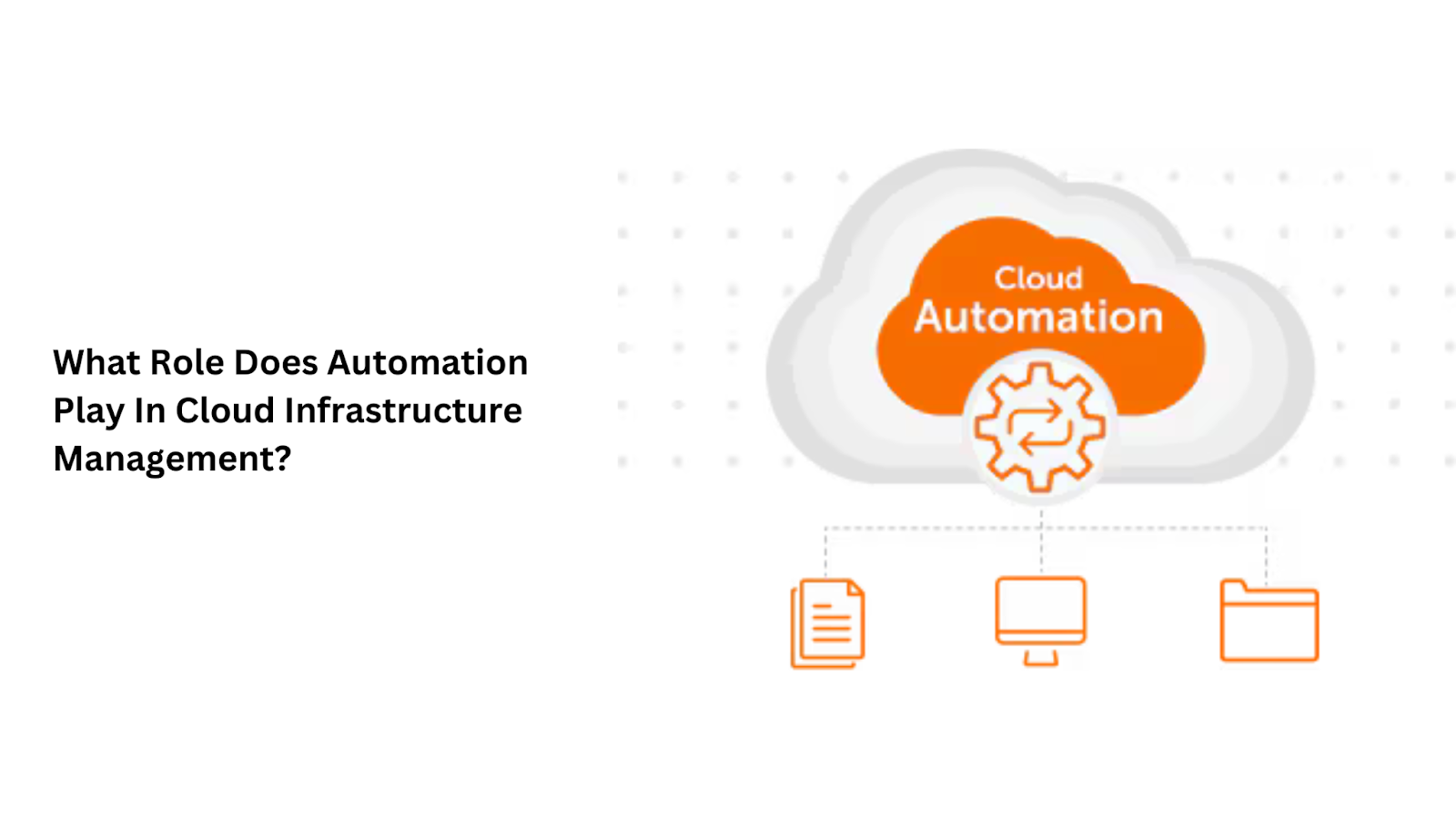Cloud infrastructure management has become a vital component of modern IT operations, mainly as companies rely on cloud offerings for agility, scalability, and cost efficiency. The complexity and scale of cloud environments necessitate state-of-the-art management strategies to ensure top-of-the-line performance and reliability.
Traditional manual methods need to be transformed to deal with the dynamic nature of cloud sources, primarily due to inefficiencies, capability mistakes, and safety vulnerabilities. Change Management for ERP Software is crucial in ensuring a smooth transition to cloud infrastructure, minimizing disruptions and maximizing the benefits of the new environment. This is when automation comes into play. Organizations can obtain more consistency, velocity, and accuracy in dealing with their cloud infrastructure by adopting, cloud consulting service, for automating recurring tasks and procedures.
Automation features an extensive range of activities, from provisioning and configuration to monitoring and scaling, and is applied to the usage of numerous tools and technology designed to work seamlessly across multiple cloud structures. The adoption of automation and cloud transformation services in cloud infrastructure management improves operational efficiency, increases resource usage, reduces operational cost, and strengthens security.
As cloud environments continue to evolve, the function of automation will be even more crucial, using innovation and allowing companies to stay aggressive in a rapidly changing digital space. This blog explores the technical considerations of automation in cloud infrastructure management, highlighting its advantages, key components, and implementation strategies.
Benefits of Automation in Cloud Infrastructure Management
Efficiency and Productivity
Automation improves efficiency and productivity in cloud infrastructure management by decreasing the time and effort required for repetitive tasks. It streamlines processes, including provisioning, scaling, and tracking, allowing IT groups to focus on more strategic initiatives. This ultimately accelerates deployment times and improves overall operational productivity.
Consistency and Reliability
Automation ensures consistency and reliability in cloud infrastructure management by removing the variety and errors associated with manual interventions. Automated procedures in cloud transformation services adhere to predefined standards and protocols, ensuring uniformity in task execution. This results in extra dependable operations, as automation scripts and tools may be meticulously examined and confirmed for consistent overall performance.
Scalability
Automation increases scalability in cloud infrastructure management by using dynamically adjusting sources in reaction to converting demands. Automated scaling rules allow cloud environments to seamlessly increase or contract primarily based on usage, ensuring the most appropriate overall performance and cost efficiency. This functionality is vital for handling variable workloads and maintaining carrier reliability.
Cost Management
Automation enhances cloud infrastructure cost management by ensuring assets are used effectively and economically. Advanced cloud transformation services automate the detection and termination of idle assets, scale resources based on actual-time wishes, and routinely implement cost-saving measures. Shopify development stores can be seamlessly integrated with cloud infrastructure management tools to automate provisioning and scaling of resources, ensuring optimal performance and reliability. This technique reduces pointless fees and optimizes universal cloud spending, delivering great monetary benefits.
Security and Compliance
Automation strengthens safety and compliance in cloud infrastructure by constantly applying security guidelines and accomplishing automated compliance assessments. It identifies vulnerabilities, enforces security configurations, and ensures timely adherence to regulatory standards. Automated remediation movements directly cope with troubles, constantly retaining secure and compliant cloud surroundings.
Read: Precision and Purpose: Modern Applications of Temperature Recording
Key Components of Cloud Infrastructure Automation
Infrastructure as Code (IaC)
IaC is a fundamental component of cloud transformation services. It entails dealing with and provisioning cloud sources using machine-readable definition files. Tools like Terraform, AWS CloudFormation, and Azure Resource Manager enable the assertion of infrastructure in code, ensuring consistency and allowing version control.
Configuration Management
Tools such as Ansible, Puppet, and Chef, renowned for their reliability, automate the configuration of cloud resources. These tools ensure that systems are consistently configured to the desired state and maintain that state over time, significantly reducing configuration drift, providing a sense of security in their application.
Monitoring and Alerting
Cloud consulting services include automated monitoring with tools like Prometheus, Grafana, and AWS CloudWatch to collect metrics, logs, and events from cloud resources. Automation ensures that alerts are triggered primarily based on predefined thresholds and that remediation movements are taken routinely.
Orchestration
Orchestration, a powerful tool, involves coordinating multiple automated tasks to achieve complex workflows. Tools like Kubernetes, Jenkins, and AWS Step Functions, known for their effectiveness, manage the orchestration of containerized applications, CI/CD pipelines, and multi-step processes, instilling a sense of assurance in their ability to handle complex workflows.
Auto-scaling
Auto-scaling abilities in cloud platforms, such as AWS Auto Scaling, Azure Virtual Machine Scale Sets, and Google Cloud AutoScaler, automatically modify the number of resources based on current demand. This guarantees the most beneficial performance and fee performance.
Implementation Strategies for Automation in Cloud Infrastructure
Define Clear Objectives
Begin by defining clear goals for automation. Identify repetitive and time-consuming duties that may be automated and prioritize them based on their effect on performance, cost, and reliability.
Implement Robust Version Control
Use version control systems like Git to control IaC scripts, configuration documents, and automation scripts. This guarantees that changes are tracked and rollbacks are possible in case of problems.
Continuous Integration and Continuous Deployment (CI/CD)
Integrate automation into CI/CD pipelines to allow automatic testing, deployment, and monitoring. Tools like Jenkins, GitLab CI, and Azure DevOps facilitate seamless integration and transport techniques.
Policy-Driven Automation
Define and enforce guidelines with help of cloud consulting services for resource provisioning, configuration, and security. Policy-pushed automation gear like HashiCorp Sentinel and AWS Config Rules ensures that all assets observe organizational regulations. Digital minimalism in cloud infrastructure management advocates for simplifying cloud environments by focusing on essential resources and services, optimizing costs, and reducing complexity.
Automate Security and Compliance
Implement computerized safety checks, vulnerability tests, and compliance assessments. Tools like AWS Inspector, Azure Security Center, and GCP Security Command Center offer automated safety and compliance management.
Conclusion
Automation and cloud transformation services are vital for managing cloud infrastructure, providing crucial benefits like more suitable efficiency, scalability, cost manipulation, and protection. Organizations can simplify their cloud operations and alleviate the workload on IT teams by utilizing advanced tools and frameworks, including infrastructure such as code (IaC), configuration control, orchestration, and tracking. Effective implementation, however, needs meticulous plans, robust trade management, continuous oversight, and a determination to ongoing training and enhancement. As cloud environments improve, automation’s importance will develop, fostering innovation and supporting agencies to meet the needs of the digital age.



